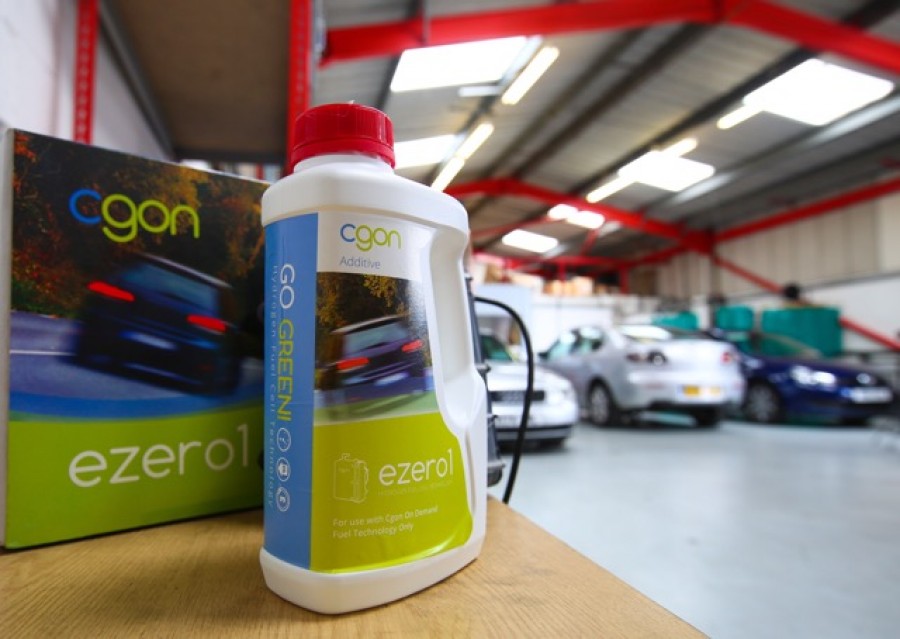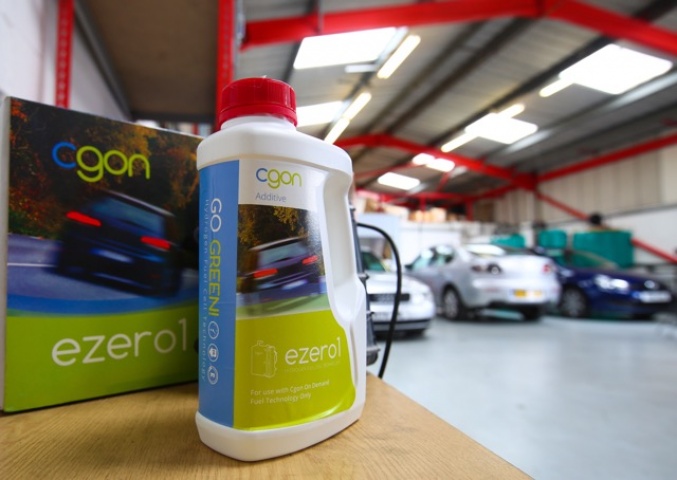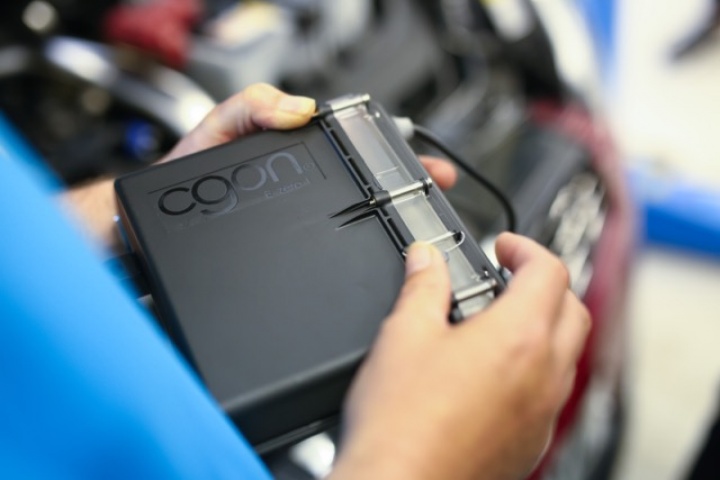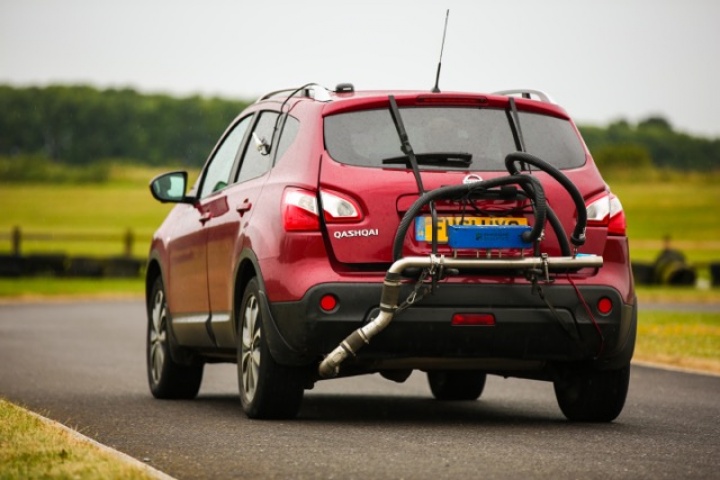Stroll into any motor accessories shop and you'll find a wall of brightly coloured bottles, the contents of which can be tipped into your fuel tank. They claim to make your car travel further, drive smoother, emit less and, probably put the colour back in your hair while they're at it. Those of them that aren't snake-oil are usually just a form of detergent that washes out your fuel injectors, and this business of adding additives to your fuel has thusly become largely derided, often ignored.
CGON, a British start-up, reckons that it has developed a system that was once thought to be tantalisingly out of reach - that of injecting pure hydrogen gas into the cylinders of your engine, not to act as a fuel in itself, but to make conventional petrol and diesel burn better. Fuel that burns better means you burn less of it. The system is already being trialled in Ireland by Transway, which has fitted it to a fleet of refrigerated trucks, and CGON claims that its device can cut the emission of dangerous nitrogen oxides by as much as 50 per cent. Fuel economy benefits too, according to the company's own figures, and so it's tempting to think of this device as a miracle cure for all engine ills.
The problem with miracle cures is, usually, that they tend to lose their lustre once you look behind the curtain, so to speak. The Wizard of Oz, after all, was rather short on miracles, if rather long on theatre.
Simon Johnson, chief executive officer of CGON, claims that this is different, though. "The actual concept of adding small amounts of hydrogen to fuel to improve combustion has been around for quite a while. NASA has used it, for instance," he told CompleteCar.ie. "The problem from an automotive point of view is that it has previously used a lot of energy. If you're running the system from the car's alternator, and you're using 30 amps to do it, well then you'll get a marginal benefit to fuel consumption because you're putting so much extra strain on the engine."
According to Johnson, CGON's development sidesteps this problem, by using what he calls "old tech with new chemistry." CGON uses a titanium rod with a very unusual coating (Johnson unsurprisingly won't elaborate on what that coating is) and a hydroxide solution of less than one per cent. At a current of just one amp, the solution starts to fall apart and generate hydrogen gas, and the system is designed to run at a constant current of 1.5 amps - a small extra load on a car's electrical system.
Injected into the fuel-air mixture, the hydrogen is claimed to improve the burning of the petrol or diesel. "The assumption that many people make is that we're running the car on hydrogen," says Johnson of his Nissan Qashqai-based prototype. "I've tried explaining to friends down the pub and they instantly say that hydrogen fuel will never work. But that's not what we're doing. What we do is add a tiny amount of hydrogen gas into the cylinder, and that makes it a more efficient burn."
CGON's remarkable claim is that, running at 1.5 amps, NOx is reduced, on average, by 47 per cent, and nitrogen oxide (NO2) by 50 per cent. Diesel particulates are said to be reduced by as much as 95 per cent, as well. Fuel economy is also improved, according to Johnson. "It depends on the car, the way it's driven and the weight, but we're seeing economy gains of between 10-20 per cent for a passenger car, and between 5-10 per cent for a commercial vehicle. Some customers have come back and said they've seen as much as a 30 per cent improvement, but we don't know how scientifically they're measuring their figures, so sadly we can't go shouting that kind of number."
CGON says that its figures have been verified by independent analysts Emissions Analytics, whose figures show that, at an average 100km/h speed in real world conditions (actually measured on the M5 motorway in England), fuel economy improves by 12.5 per cent - and greater gains are expected in urban conditions.
The obvious question at this point is why, with their vast technical resources, and desperate need to convince legislators and public alike that they're doing something to curb emissions, the major car makers haven't already cottoned on to this?
Johnson says that CGON has started to have conversations with various major car makers, "but it's a long, slow process. Even if we signed an agreement today, by the time they've taken the system, tested it, integrated it into the production process, and actually put it on sale, it'll be 2020 at the earliest. It's not going to appear sooner than that unless a manufacturer is very aggressive with it, but given the current debate over emissions, that's not impossible." Not impossible, but one definitely has to ask why the globe's biggest car makers, with their enormous R&D resources, haven't cottoned onto these benefits, if indeed they are there.
The cost of the system makes for an interesting point. You'll pay £469 (about €526, but no Irish price has been set as yet) for the system, fully fitted, and £5 (about €5.60) a throw for hydroxide refills of 250ml, which should last for an average of 10,000km. That represents a significant potential saving compared to trading your existing car in for a new, lower-emissions model, as is currently being encouraged by various car makers and their so-called 'scrappage' schemes. There is a chance, assuming that CGON's number can be reproduced in the real world, that many of the cars being traded-in under such schemes won't be scrapped at all, and that keeping an old car going is better in general for the environment. If so, CGON could just have hit upon a sweet spot just as the issue of emissions is suddenly paramount in people's minds.
The box itself, which can be installed in any car, is itself fully recyclable, while the by-products produced by other systems (including poisonous hydrogen fluoride) have been eliminated. The CGON system was originally created by Brian Sheard, a former Royal Navy officer who served aboard nuclear-powered submarines. Sheard, incidentally, described the comparison between working with a nuclear reactor and working with vehicle legislation, telling us that "vehicle legislation and red tape is by far, far more stressful!"
Stressful, but potentially bountiful. CGON is currently in talks to have its system registered as compliant with the incoming emissions-based London T-Charge, and is setting up talks with London Mayor Sadiq Kahn.
OK, it's time for a healthy dose of scepticism. Miracle cures rarely turn out to be what they claim, and we've been left disappointed by more than one snake-oil salesman in the past. It's just possible that CGON might prove that there's wizardry in hydrogen after all, but one has to ask, even if the veracity of the claims can be proven, whether there's value in pursuing such solutions for existing engines, when what we need now is a breakthrough on battery technology.





